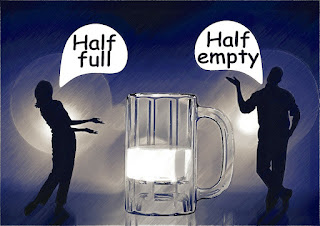Introduction
The Significance of Point of View in Modernist Literature
Point of view is a vital element in modernist literature, which shapes the narrative and influences the reader's perception of the story. The use of point of view can provide insight into the character's thoughts and feelings, allowing the reader to gain a deeper understanding of their experiences. Furthermore, point of view can create a sense of intimacy with the reader, enabling them to connect with the character's emotions and experiences.
According to literary critic Virginia Woolf, "fiction is like a spider's web, attached ever so lightly perhaps, but still attached to life at all four corners." This statement highlights the idea that point of view plays a crucial role in creating a sense of realism in modernist literature. By using different perspectives, the author can provide a more comprehensive and realistic view of the story.
The Exploration of Different Narrative Perspectives
One notable characteristic of modernist literature is the exploration of different narrative perspectives. Writers often employed various forms of point of view, such as first person, third person, or even shifting perspectives within a single work. This experimentation with point of view aimed to challenge the idea of a single, objective truth and instead highlighted the subjective nature of human perception.
For instance, in James Joyce's groundbreaking novel "Ulysses," the narrative unfolds through a stream-of-consciousness technique, allowing readers to delve into the inner thoughts and perspectives of multiple characters. The use of shifting perspectives in "Ulysses" reflects the fragmented nature of modern life and presents a multiplicity of viewpoints, emphasizing the subjectivity of experience.
Similarly, Virginia Woolf's novel "Mrs. Dalloway" employs a stream-of-consciousness technique that immerses readers in the minds of different characters. Through the use of shifting perspectives, Woolf portrays the inner lives and perceptions of her characters, revealing the complexities and contradictions of their thoughts and emotions. The multiple viewpoints in "Mrs. Dalloway" create a sense of a fragmented reality and highlight the subjective nature of individual experiences.
Another notable example of point of view experimentation in modernist literature can be found in William Faulkner's novel "The Sound and the Fury." The novel is divided into sections, each narrated by a different character, and the use of various perspectives reveals the subjectivity and unreliability of memory and perception. By presenting the story from different points of view, Faulkner explores the characters' subjective interpretations of events and invites readers to question the reliability of narrative truth.
The Use of Point of View in Modernist Literature
Modernist literature often uses unconventional techniques to present the narrative, which challenges the reader's expectations and assumptions. One of the most significant ways in which modernist literature utilizes point of view is through stream of consciousness writing. This technique aims to convey the character's thoughts and emotions in a continuous flow, reflecting the fluidity and complexity of human consciousness.
Another way in which point of view is used in modernist literature is through the use of multiple narrators. This technique allows the reader to gain a broader perspective on the story, as different characters offer their unique interpretations and experiences. This approach can create a more layered and complex narrative, highlighting the subjective nature of human experience.
The Influence of Point of View on Reader's Interpretation
The use of point of view in modernist literature can significantly impact the reader's interpretation and understanding of the story. The way in which the narrative is presented can shape the reader's perspective, leading to different interpretations and meanings. For example, in William Faulkner's novel "As I Lay Dying," the use of multiple narrators creates a fragmented and disjointed narrative, challenging the reader's expectations and forcing them to reconstruct the story.
In addition to multiple perspectives, modernist writers also employed unconventional narrative techniques to further challenge traditional notions of point of view. For instance, T.S. Eliot's poem "The Waste Land" incorporates different voices, fragmented narratives, and cultural references to create a collage-like structure. This fragmented approach reflects the disorientation and disillusionment of the post-World War I era and presents a multiplicity of viewpoints, blurring the boundaries between individual experiences and societal perspectives.
Conclusion
In conclusion, point of view is a crucial element in modernist literature, shaping the narrative and influencing the reader's perception of the story. By using different techniques such as stream of consciousness writing and multiple narrators, modernist authors can create a more complex and layered narrative, highlighting the subjective nature of human experience. Understanding the use of point of view in modernist literature is essential for graduate and post-graduate students, as it can provide insight into the literary techniques used to convey meaning and engage readers.


Very informative.
ReplyDelete